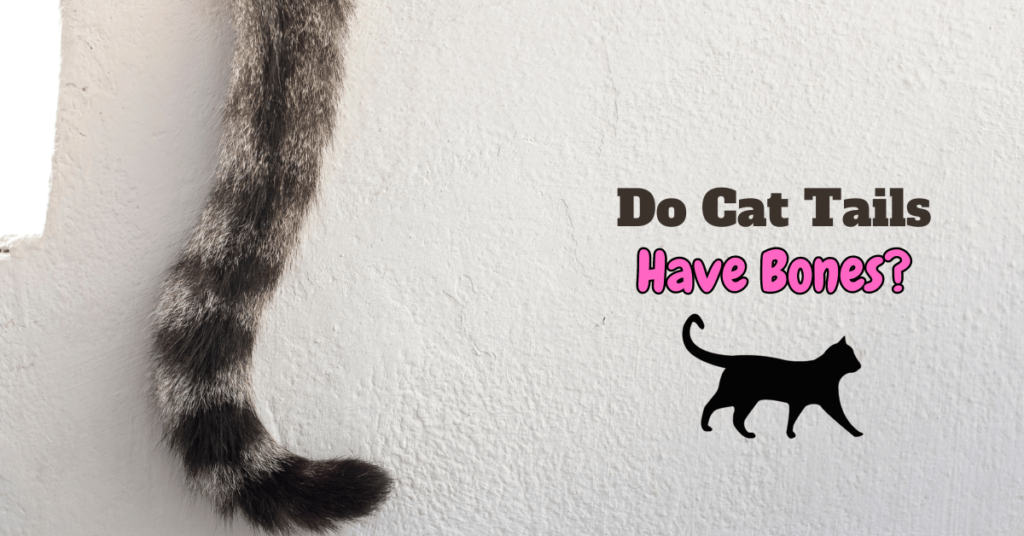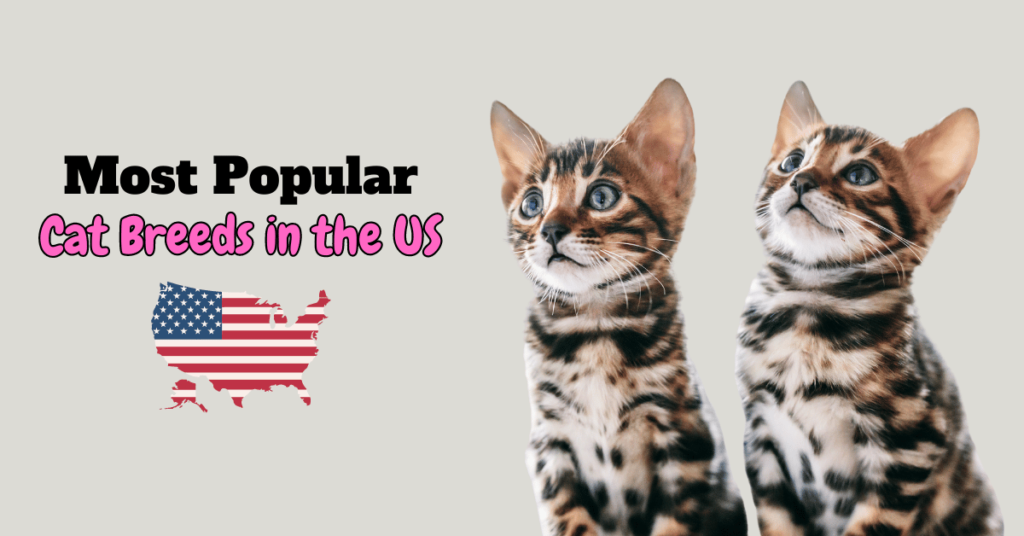This post contains affiliate links and I will be compensated if you make a purchase after clicking on my links.
What Sets Cat Breeds with Short Tails Apart
While most cats have long tails, some breeds stand out with their charmingly short ones. These felines, though rarer, are gaining popularity and recognition from major cat registries like the Cat Fanciers’ Association (CFA), The International Cat Association (TICA), and The American Cat Fanciers’ Association (ACFA).
Within these breeds, tail lengths can vary—even among siblings. You might encounter a “rumpy,” with almost no tail, or a “stumpy,” with a tail that’s about half the usual length. Despite their compact tails, these cats are just as agile and expressive as their long-tailed counterparts, making them a truly special addition to the feline world.
Fact: Cats with short or no tails are perfectly balanced since they’ve grown up that way. But if a cat loses its tail suddenly, it might wobble a bit as it adjusts to life without it.
1. The American Bobtail
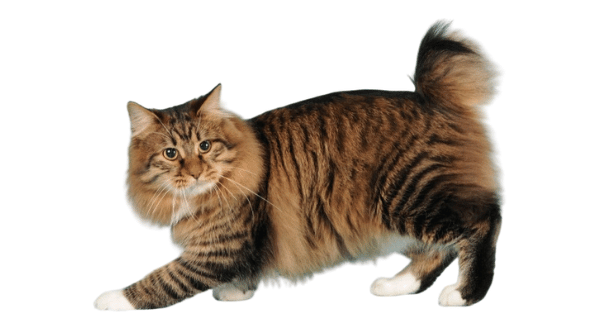
Lifespan: 12-15 years
The American Bobtail, originating in the early 1960s, is a striking breed known for its wildcat appearance and affectionate nature. Despite their rugged looks, complete with lynx-like ears, toe tufts, and those distinctive mutton-chop cheeks, American Bobtails are big softies.
Weighing in at up to 16 pounds, these felines love to snuggle on the couch or curl up in your lap. While they have a playful side and enjoy a bit of activity, they’re equally content spending quality time in your arms.
2. The Manx
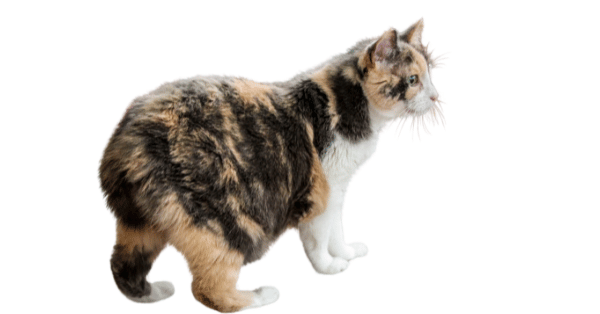
Lifespan: 10-16 years
The Manx cat, hailing from the Isle of Man between Ireland and Great Britain, is famous for its lack of a tail—a result of a naturally occurring mutation. Due to the island’s small cat population, this mutation spread rapidly, leading to the development of the Manx breed.
Some Manx cats have no tail at all, while others might have a short “stumpy” tail. Known for their exceptional ratting skills, Manx cats have a long history as ship cats, keeping vessels free from pests. They come in a variety of colors and coat patterns, from sleek black to tri-colored coats, making each Manx cat as unique as its tail (or lack thereof).
3. The Cymric

Lifespan: 9-13 years
Some folks might call the Cymric just a long-haired Manx, but this furball brings its own flair to the table. Named after the Welsh word “Cymru,” the Cymric has a history as dynamic as its appearance. While its roots trace back to the Isle of Man, Canada proudly claims it as their creation.
Much like the Manx, Cymrics are active and have a strong prey drive, making them great little hunters. But don’t expect them to be lap cats—they’re more likely to keep themselves entertained or engage in a good game of chase. If you’ve got an active household, the Cymric will fit right in with its playful spirit and independent nature.
4. The Highlander Cat
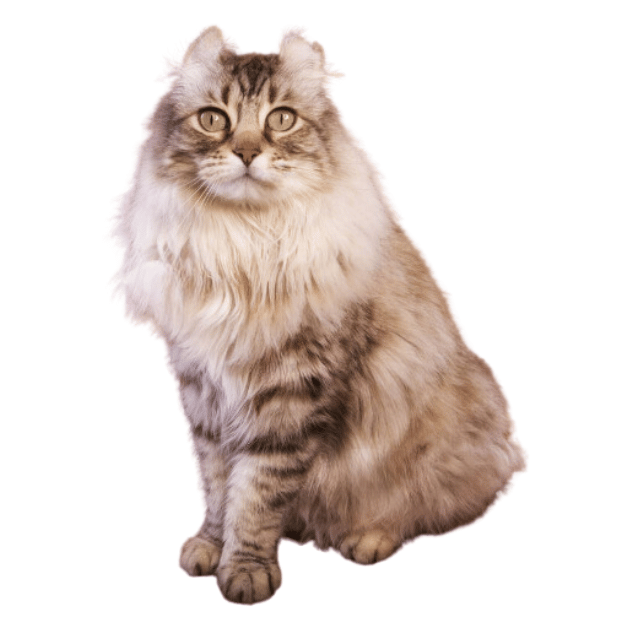
Lifespan: 10-15 years
The Highlander Cat breed is the result of crossing the Desert Lynx and the Jungle Curl, creating a feline that looks like it stepped straight out of the jungle. Weighing in at 10 to 20 pounds, Highlanders are big, bold, and brimming with confidence. But don’t let their fierce appearance fool you—these cats are incredibly people-oriented and love being part of the action.
They’re not shy or easily spooked, making them fantastic companions who thrive on interaction without being overly clingy. If you want a cat that’s both wild-looking and wonderfully social, the Highlander is the one for you.
5. The Mekong Bobtail Cat
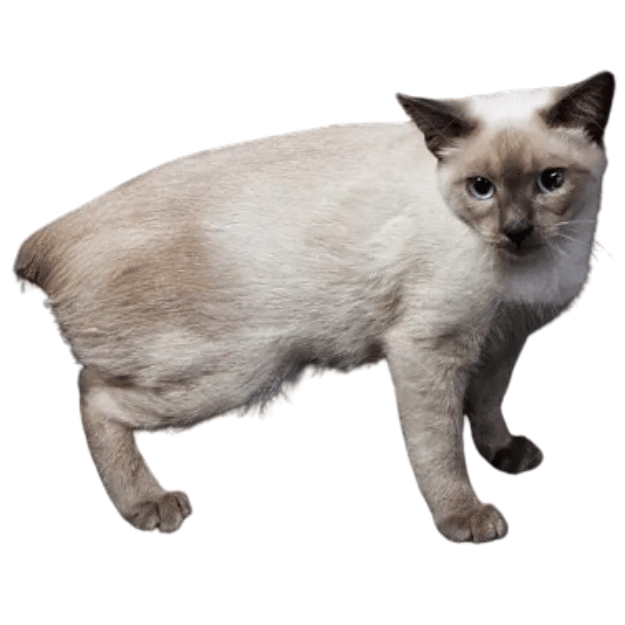
Lifespan: 15-18 years
Hailing from Thailand and named after the majestic Mekong River, the Mekong Bobtail is a cat with a regal past. Once considered a royal treasure by 19th-century Russian emperors, this breed has an air of elegance that’s hard to ignore.
Officially recognized by the World Cat Federation in 2004, the Mekong Bobtail is known for its stunning blue coats and distinctive point colors that grace their paws, faces, and ear tips. And let’s not forget those mesmerizing icy blue eyes that can easily captivate anyone who crosses their path.
6. The Pixie Bobcat
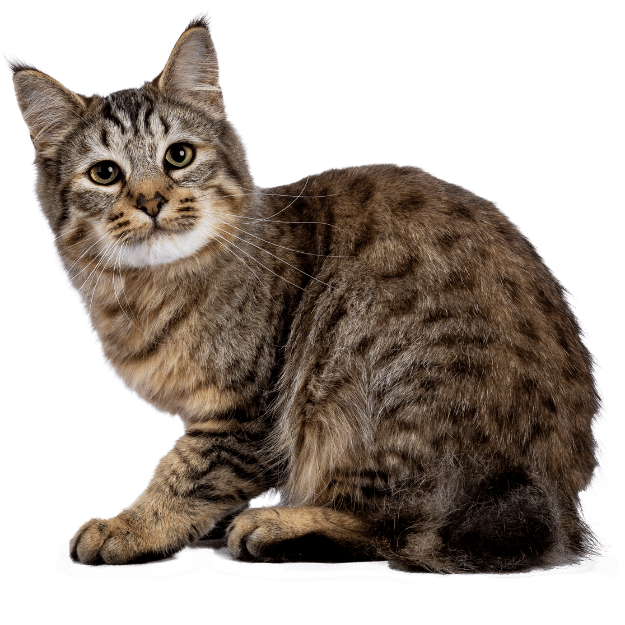
Lifespan: 13-15 years
If you’ve ever wanted a mini bobcat in your home, the Pixie Bobcat is the next best thing! Originating in the mid-1980s in Mount Baker, Washington, this relatively new breed is known for its striking resemblance to the American Bobcat, right down to its bushy brows and deeply hooded eyes.
Despite their wild appearance, Pixie Bobcats are sweet, affectionate companions who get along famously with people and pets alike. Recognized by TICA and ACFA, these cats are as charming as they are unique, making them a beloved choice for those who appreciate a little wildness with a whole lot of love.
7. The Japanese Bobtail
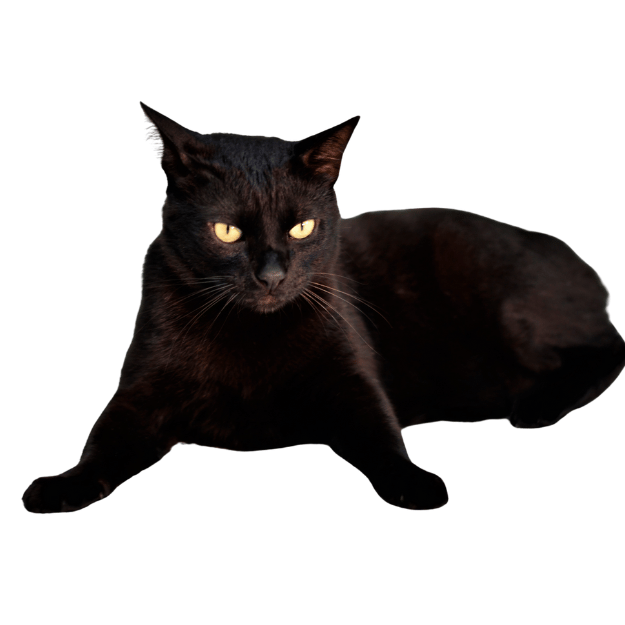
Lifespan: 9-15 years
The Japanese Bobtail is not just another short-tailed cat; its tail is so bobbed it’s more like a rabbit’s puff than anything else. This ancient breed, native to Southeast Asia and Japan, has been charming humans for over 1,000 years.
Frequently appearing in traditional Japanese art and folklore, the Japanese Bobtail is considered a symbol of good luck, especially if you spot one with a raised paw. While they’re intelligent and enjoy human interaction, they’re also independent enough to be left alone without fuss.
8. The American Lynx Cat
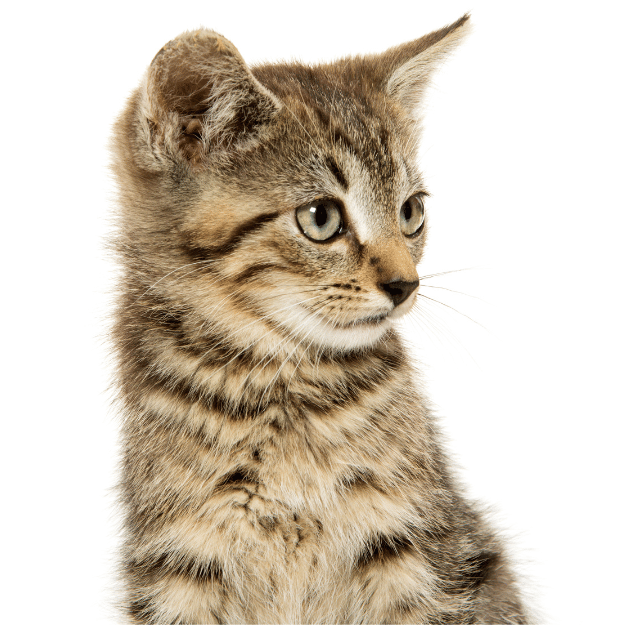
Lifespan: 12-15 years
The American Lynx Cat may look like a wild lynx, but don’t be fooled—this breed is entirely domestic, bred to mimic its wild cousin’s striking appearance. As one of the newest and rarest bobtailed cat breeds, the American Lynx is an experimental breed that’s hard to find, often only available to breeders.
Originating in the United States, these cats weigh between 6 to 9 pounds and are known for their scruffy paws and exotic markings, resembling the American Bobcat. Recognized by the Rare and Exotic Feline Registry, the American Lynx Cat is perfect for those who want a touch of the wild in a manageable package.
Fact: The American Lynx sports three coat patterns—tawny, leopard, and clouded leopard—in colors like ebony, blue, and more, even including rare reds and creams.
9. Kurilian Bobtail Cat
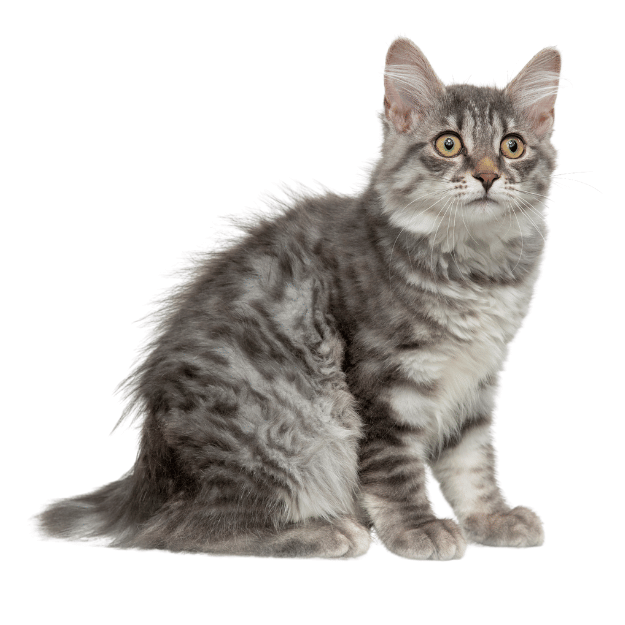
Lifespan: 15-20 years
The Kurilian Bobtail Cat is a big, fluffy feline with a history as wild as its look. Believed to share common ancestry with the Japanese Bobtail, the Kurilian Bobtail developed in isolation on the Kuril Islands and parts of Russia.
With a naturally kinked, short pom-pom tail, this breed is recognized by The International Cat Association as an “Advanced New Breed.” Weighing up to 12 pounds, Kurilian Bobtails are excellent jumpers and skilled mousers, often used in Russia to protect grain stores.
10. The Desert Lynx
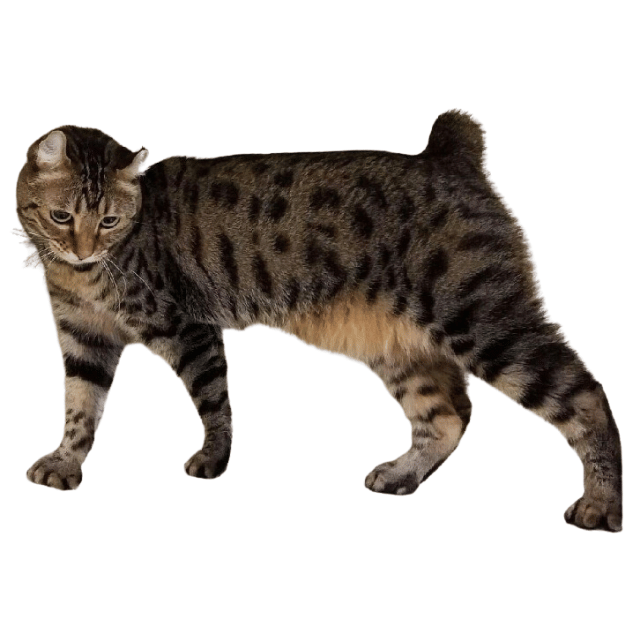
Lifespan: 12-16 years
The Desert Lynx, is a newly developed American cat breed that’s as exotic as they come. With large, tapering ears adorned with 5-centimeter tufts of black fur, this breed is instantly recognizable and utterly captivating.
Despite their wild appearance, Desert Lynx cats are domesticated, offering the allure of a wild cat with the temperament of a pet. If you’re drawn to a cat with an exotic flair and distinctive features, the Desert Lynx is the perfect choice for your feline family.
Why Cat Breeds with Short Tails Are Winning Hearts
From the wild looks of the American Lynx Cat to the ancient charm of the Japanese Bobtail, cat breeds with short tails offer a fascinating array of personalities and appearances. Whether you’re drawn to their distinctive tails, rich histories, or simply their quirky charm, these breeds prove that tails aren’t the only thing that define a cat.
Each of these short-tailed felines brings something special to the table, making them a delightful addition to any home. As more people discover the unique appeal of these cats, their popularity continues to grow, offering cat lovers the perfect blend of wild allure and domestic affection.
Meet Sean, a fintech whiz with a penchant for pet purrs and blockchain buzz. After a decade of fintech feats, Sean’s tech talents leaped from ledger lines to litter lines, driven by a passion for pets and a vision for a more connected pet care community. With three critter companions as co-pilots, Sean launched this blog to share a treasury of pet-friendly tech tips and tales.


